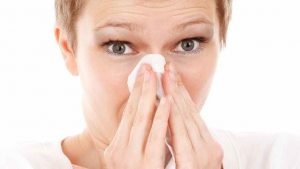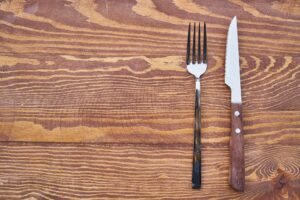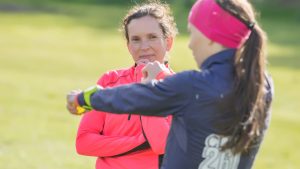Do you know what the word sarcopenia means? Don’t worry if you don’t because I’m going to tell you and I’m so glad you’re here because everyone needs to know what sarcopenia is and you need to know how to prevent sarcopenia too.
I first wrote about sarcopenia back in 2018. I had so much good feedback and shares of that blog post, I thought I would do an updated version because it’s a really important topic.
What is sarcopenia?
Sarcopenia comes from the Greek words sarc, which means ‘flesh’ and penia which means not enough of. Essentially you have sarcopenia when you don’t have enough muscle mass. Most people are familiar with the fact that you lose bone mass as you get old, can develop osteopenia which can progress to osteoporosis. Fewer people know that the same thing happens with muscle mass. You reach your peak muscle mass around age thirty and then you lose a tiny amount so slowly that you don’t even notice. The loss speeds up around the menopause and over 50 we can be losing as much as one per cent every year. When you lose muscle mass you lose strength and function.
Why does sarcopenia happen?
Losing muscle mass is part of the ageing process and it happens to all of us regardless of whether we lead an active life or not. However, it will affect you more if you lead a sedentary lifestyle.
It’s not known exactly why it happens and it’s likely due to multiple factors such as:
- Changing hormone levels in our body
- Insufficient protein intake to build and maintain muscle
- Slower and less active neural pathways that innervate muscle
- Long term chronic diseases and ill health
- A general increase in sedentary behaviour as you age
Why does it matter?
If you’re not bothered about having a six pack or flexing a bicep you might think this decline in muscle mass isn’t that important to you but muscles are vital for good health. It’s only in recent years that we’ve really understood some of the roles that muscles play.
A healthy muscle mass will keep us strong and stable. This makes us less likely to fall and more likely to remain living independently in years to come. We’re not just talking glutes and triceps here, remember the postural muscles, muscles in our ankles, small muscle in our feet etc. They’re all important. The World Health Organisation state that falls are the second leading cause of deaths from unintentional injury worldwide. That’s a sobering fact. It can be hard to motivate yourself to take action now for something you perceive as far in the future but it’s worth doing.
Muscles prevent disease. It’s now known that most major health conditions such as type 2 diabetes, coronary heart disease, cancers and even depression are partly caused or sped up by inflammation in the body. The body has its own anti-inflammatory processes to prevent these diseases and one of these is muscle. When you use muscles during exercise they release myokines into the blood stream. Myokines are anti-inflammatories so having good muscle bulk and exercising regularly will ensure a good supply of these and reduce your risk of disease.
Muscles have a role in metabolism. If you’re a women in peri or post menopause you might have noticed your body composition changing. Many women complain they gain body fat and some gain weight generally. This can be for a variety of reasons, including having a more sedentary lifestyle. Reducing muscle mass may play a part in this. Due to changing hormone levels, it can be harder for women in menopause to gain muscle. With less muscle tissue the energy our body needs to just keep ticking over every day (our Basal Metabolic Rate) falls; muscles burn more energy than fat. If you’re struggling to maintain a healthy body composition then increasing your muscle bulk is an important step to take.
How can I prevent sarcopenia?
The good news is, while the loss of muscle is involuntary there’s plenty we can do about it. The bad news is that it involves being motivated, making changes and taking action.
Even small changes can make a big difference so don’t be put off thinking you have to revolutionise your life.
- Use and build your muscles. Any type of exercise will help and is better than sitting still. Climbing stairs and walking uphill are great but specific muscle strengthening exercises are the best bet. You can do exercises against your own body weight to start with but add resistance bands and weights as you get stronger. Aim for twice a week if you can. Find a class, go to a gym or workout at home it doesn’t matter. Look for opportunities in your day to lift heavy things too, shopping bags, digging in the garden, it all counts. Download my free guide for getting started with strength work.
- Nourish your muscles. Muscles are made up of about 80 per cent protein. Without sufficient protein in your diet it will be hard to maintain muscle mass and even harder to increase it. Our protein requirements probably increase a bit as we age. They may be different for women around menopause too but we don’t have clear guidance on this yet. Don’t overcomplicate things, just try to include some sort of protein in each meal, protein intake is best spread out through the day rather than being taken all in one go. Here are some protein-rich foods to include:
- Eggs
- Nuts and seeds
- Fish and seafood
- Dairy food such as Greek yoghurt and cheese
- Beans and pulses
- Meat – chicken, turkey breasts and beef
Sarcopenia is a natural process going on in your body. There are lots of simple, every day things that we can do to counteract it. Be proactive, act now and enjoy a healthier future. If you’d like help to get started with strength work, you can download my free ‘Tips for Getting Started with Strength Work’ guide here. Keep me posted on your progress.
Featured image by Selina Toonen from Pixabay








2 Comments